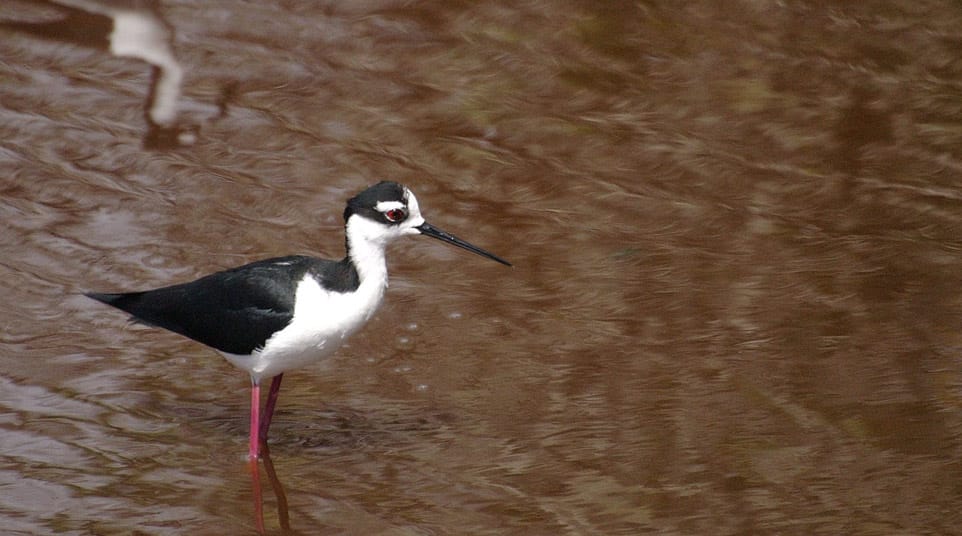- Home >
- Travel Guide >
- Galapagos Islands >
- Animals & Wildlife >
- Black-necked Stilt
Black-necked Stilt in Galapagos Facts
Name: Black-necked Stilt Bird
Family: Recurvirostridae
Scientific name: Himantopus mexicanus
Length: 35 - 40 cm (13.7 - 15.7 in)
Weight: 167 g (6.6 oz)
Clutch Size: 1-5 eggs
Category: Stilts
Category: Shore Birds
Number of Species: 28
Endemic Species: 19
In total, 21 species of water birds have been recorded in Galapagos, 10 of which are endemic to the Islands. Thirty-Four species of shore birds have been recorded in Galapagos, only 2 of which are endemic.
Stilts are medium-sized shore birds but are unmistakable due to their black and white plumage and exceptionally long legs. The sexes are similar.
Description:
The Black-necked Stilt is an uncommon resident of Galapagos. It can be found in saline and freshwater habitats throughout the islands and breeds from December to June. This New World form is sometimes considered to be the same species as the Black-winged Stilt H. himantopus of the Old World.
Identification:
The Black necked stilt is a medium-sized, unmistakable wader with black wings, mantle, hind neck and crown: white under parts, rump and tail; and extremely long, pink legs which project well beyond the rip of the tail in flight. Adults have long pink legs and a long thin black bill. They are white below and have black wings and backs. The tail is white with some grey banding. A continuous area of black extends from the back along the hind neck to the head. There, it forms a cap covering the entire head from the top to just below eye-level, with the exception of the areas surrounding the bill and a small white spot above the eye. Black necked stilt males have a greenish gloss to the back and wings, particularly in the breeding season. This is less pronounced or absent in stilt females, which have a brown tinge to these areas instead. Otherwise, the black necked stilt sexes look alike.
Downy young are light olive brown with lengthwise rows of black speckles (larger on the back) on the upper parts – essentially where adults are black – and dull white elsewhere, with some dark barring on the flanks.
Where their ranges meet in South America areas not in the Galapagos, the black-necked and white-backed stilts intergrade. Such stilts often have some white or grey on top of the head and a white or grey collar separating the black of the hind neck from that of the upper back.
The black-necked stilt is distinguished from non-breeding vagrants of the Old World black-winged stilt by the white spot above the eye. Vagrants of the northern American form in turn is hard to tell apart from the resident Hawaiian stilt, in which only the eye-spot is markedly smaller. But though many stilt populations are long-distance migrants and during their movements can be found hundreds of miles offshore, actual trans-oceanic vagrants are nonetheless a rare occurrence.
Food and Feeding:
The black-necked stilt in the Galapagos feeds by probing and gleaning primarily in mudflat, but also in very shallow waters near the Galapagos shores; it seeks out a range of aquatic invertebrates – mainly crustaceans and other arthropods, and mollusks – and small fish, and very rarely plant seeds. Its mainstay food varies according to availability; inland birds usually feed mainly on aquatic insects and their larvae, while coastal populations mostly eat other aquatic invertebrates. For roosting and resting needs, this bird selects flats (even flooded ones), and the Galapagos islands surrounded by shallow water.
Voice:
Gives a range of high-pitched piping calls, including "kik, kik-kik..." , "kek" and "kee-ack". These sounds are a sharp yipping. Given continuously when disturbed.

